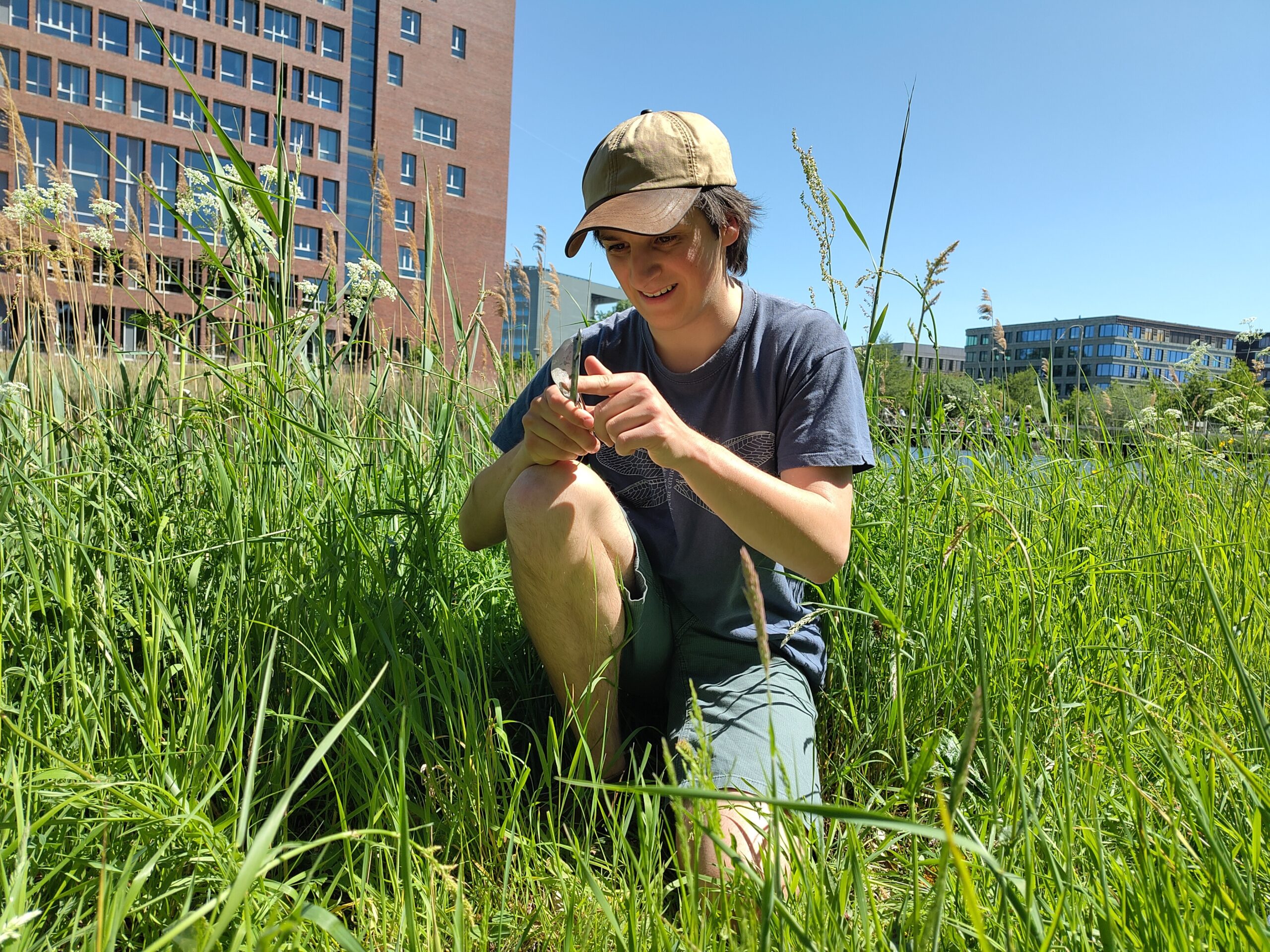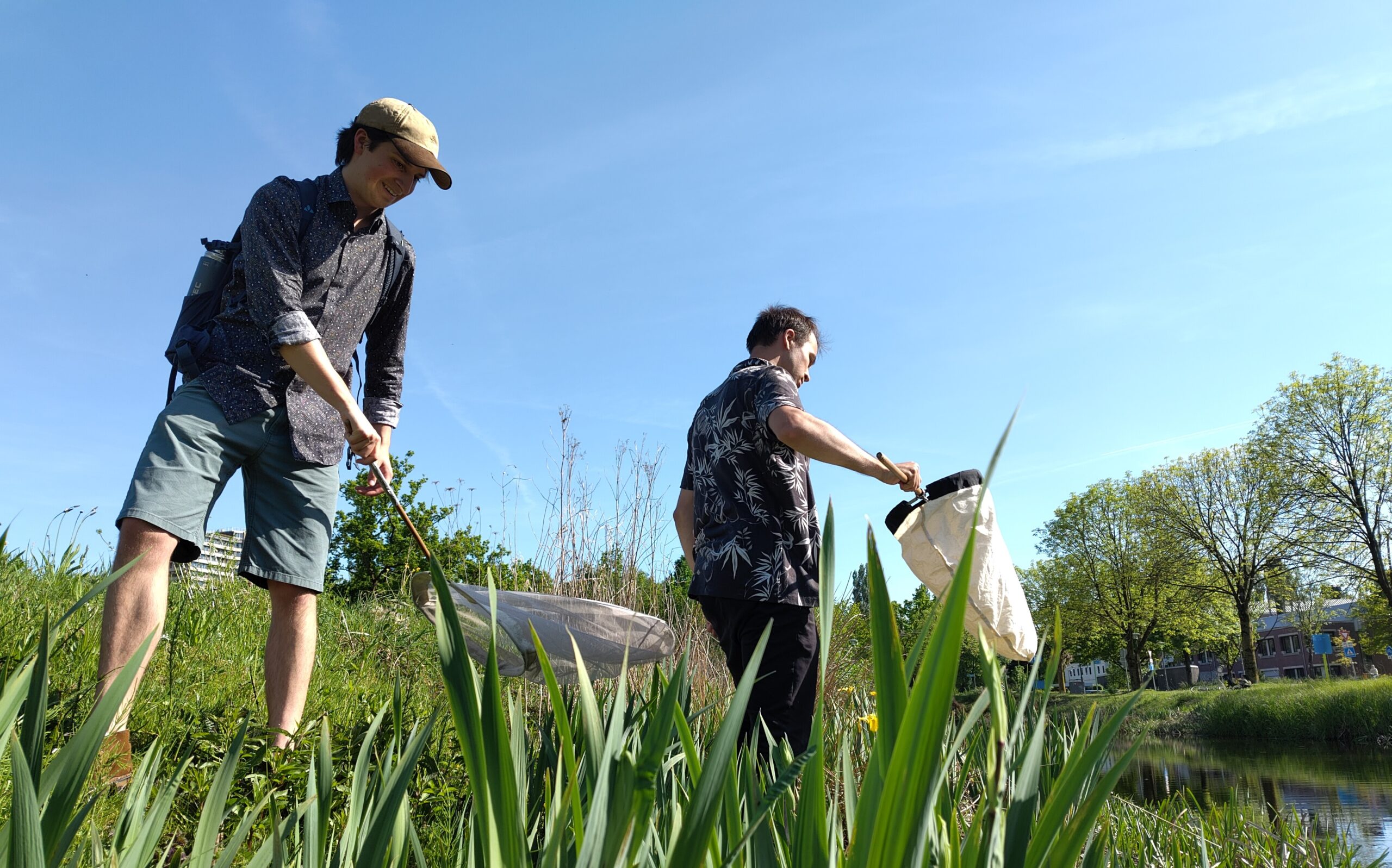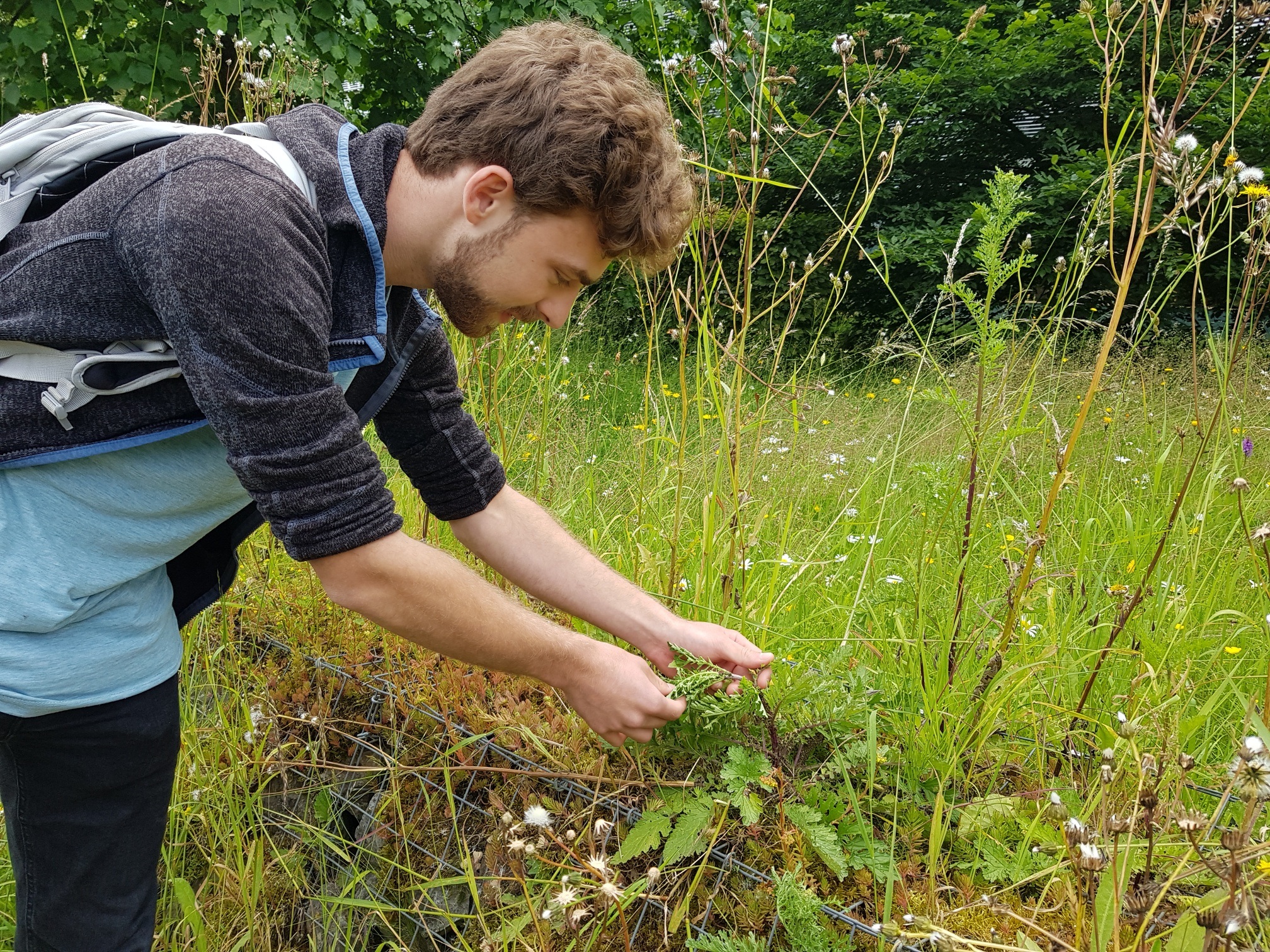The 2025 BioBlitz has been going for two weeks now. The first milestone, of 1,000 species spotted, will soon be achieved. The numbers of species of insects and plants are roughly equal, which is weird because there are far more insect species than plants on the planet. And therefore on campus too. Text Roelof Kleis
Luc Elshout (third-year Biology Bachelor’s student) wants to put that right. But the insects need to do their bit too. In this specific case, by crawling into his traps. He has dug 20 plastic pots into the ground, spread around the campus. He uses yoghurt pots, the simplest version of a pitfall trap. He hopes the traps will let him add numerous small crawling insects to the BioBlitz.
Elshout is mainly interested in the insects that people don’t notice. ‘Everyone can see an insect on a flower, but a tiny bug crawling across the ground is much harder to find. It’s precisely those smaller, inconspicuous insects on campus that I want to spot.’ Incidentally, he doesn’t just use pitfall traps; he also set up three traps for flying insects this week.
Sawflies
He is actually specialized in sawflies, a small niche in the extensive insect world. ‘Not many people look at sawflies,’ he says, explaining why he chose them. ‘So there is a lot left to discover. It’s also a manageable group with its 560 species.’ He knows most of those 560 species. As befits a true specialist.
Not many people look at sawflies, so there is still a lot to discover
Luc Elshout, Biology Bachelor’s student
The insects caught in his traps aren’t usually sawflies, so he could use some help in identifying his catches. In fact, people from the Biosystematics chair group and the KNNV Wageningen nature society are organizing a series of Wednesday evenings to ‘give a name to’ the species spotted. Anyone who wants can come along to the IVN clubhouse Het Groene Wiel on Wageningse Berg.
As a taster of what you might see, Elshout dips a tea strainer in a trap next to the Forum pond. There is water at the bottom of the trap. The water has a function, he explains. ‘The insects drown in it, which stops the large insects from eating the small ones. Otherwise you would miss the little ones.’
He has a good haul. A copper greenclock beetle catches the attention. ‘We need to examine it under the microscope because there are three of them,’ says Elshout. He also notes various daddy-longlegs, an earthworm, springtails and an ant. Plus a hoverfly and a bluebottle. ‘Which is surprising given that they are flying insects.’ Idiots are clearly a universal phenomenon.
Unusual
Last week, Luc Elshout spotted a sawfly next to the Lumen pond that hadn’t been seen in the Netherlands for 50 years. The sawfly in question is Aprosthema melanurum. The fly was spotted not just on campus but also on the dyke in Wageningen. In both cases it was on a slope in the sun, which Elshout says is logical because this species likes the warmth.


![[Seriously?] Something fishy about BioBlitz](https://www.resource-online.nl/app/uploads/2025/05/WEB_DeNeusUK.png)

